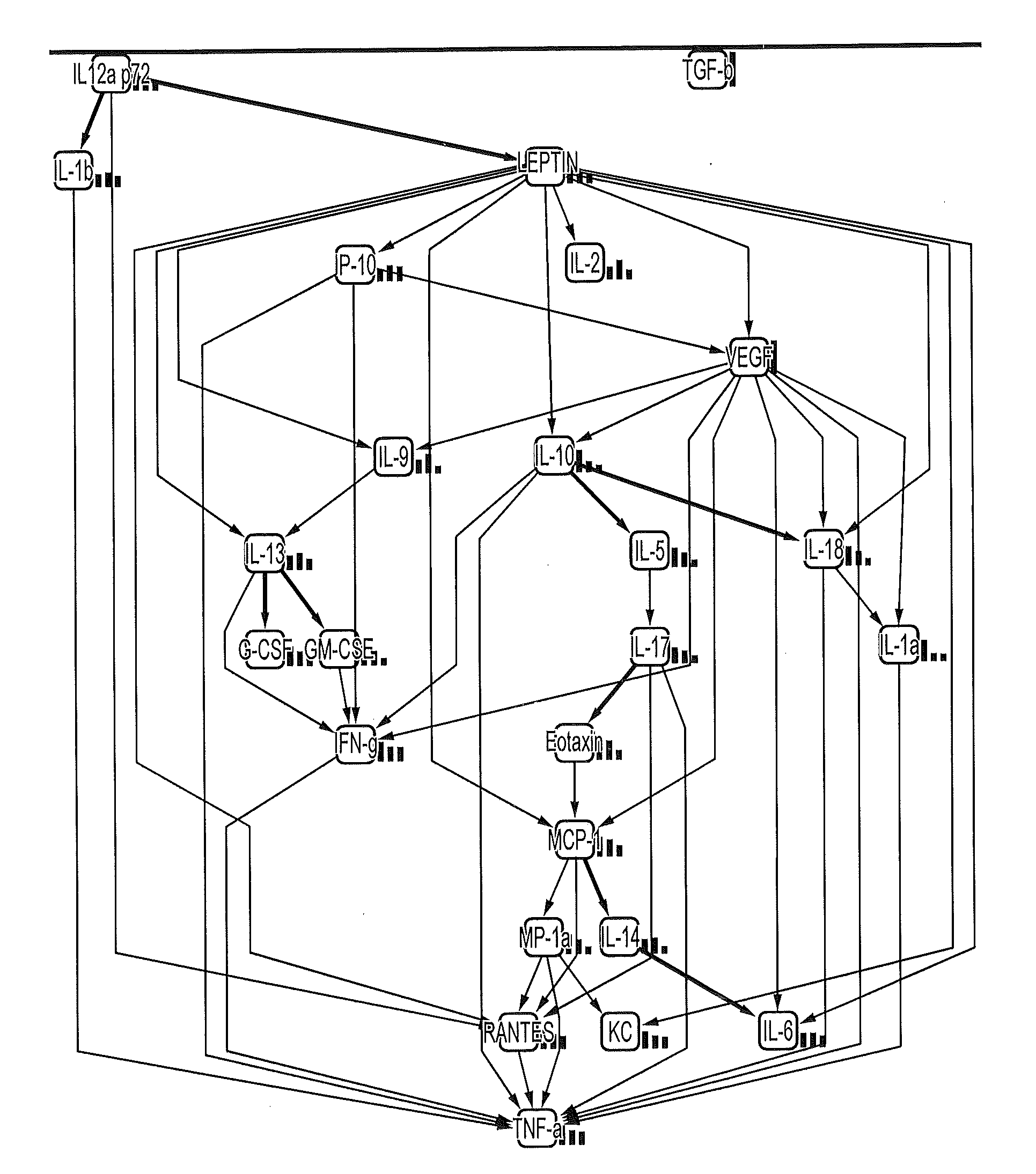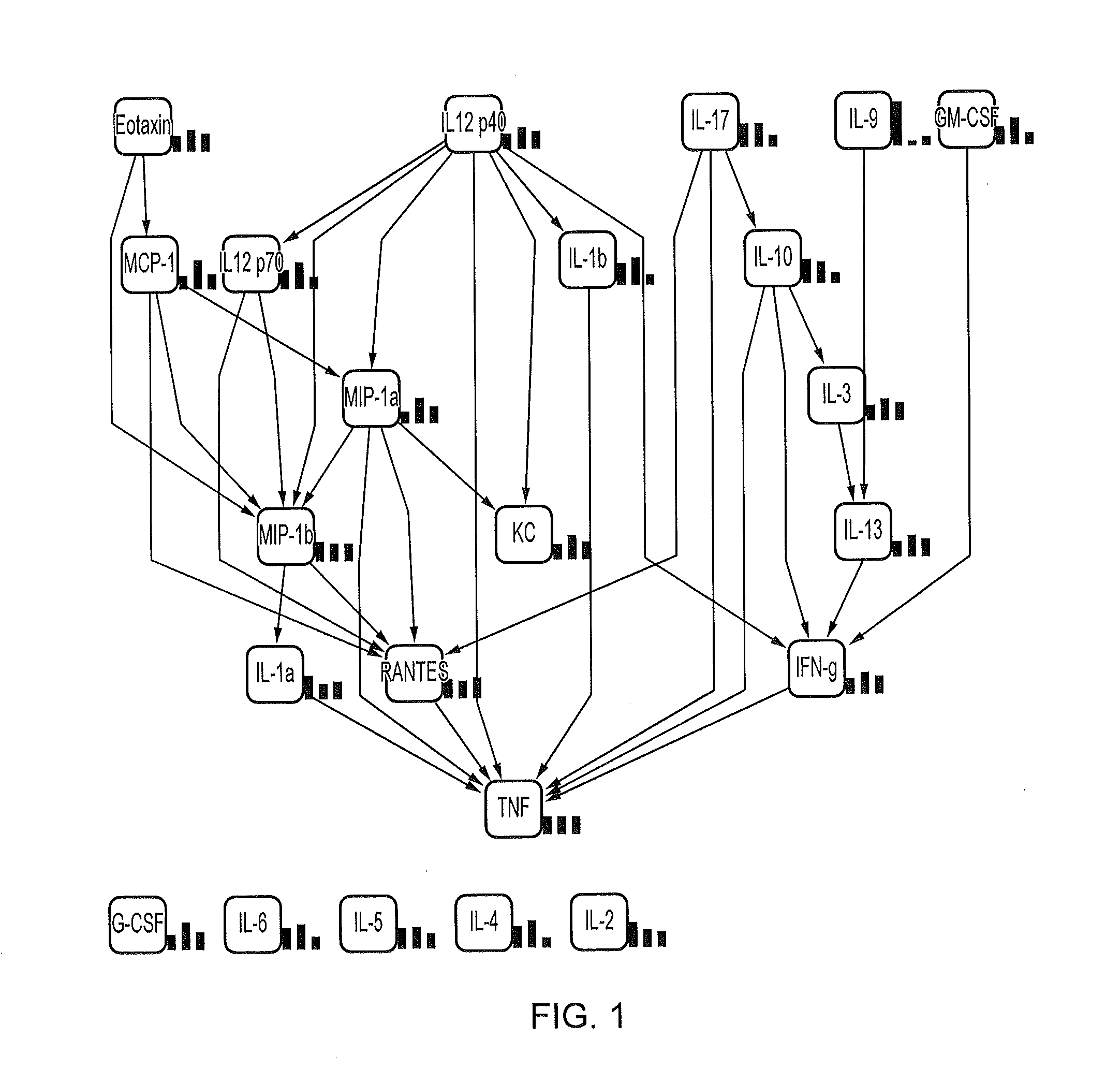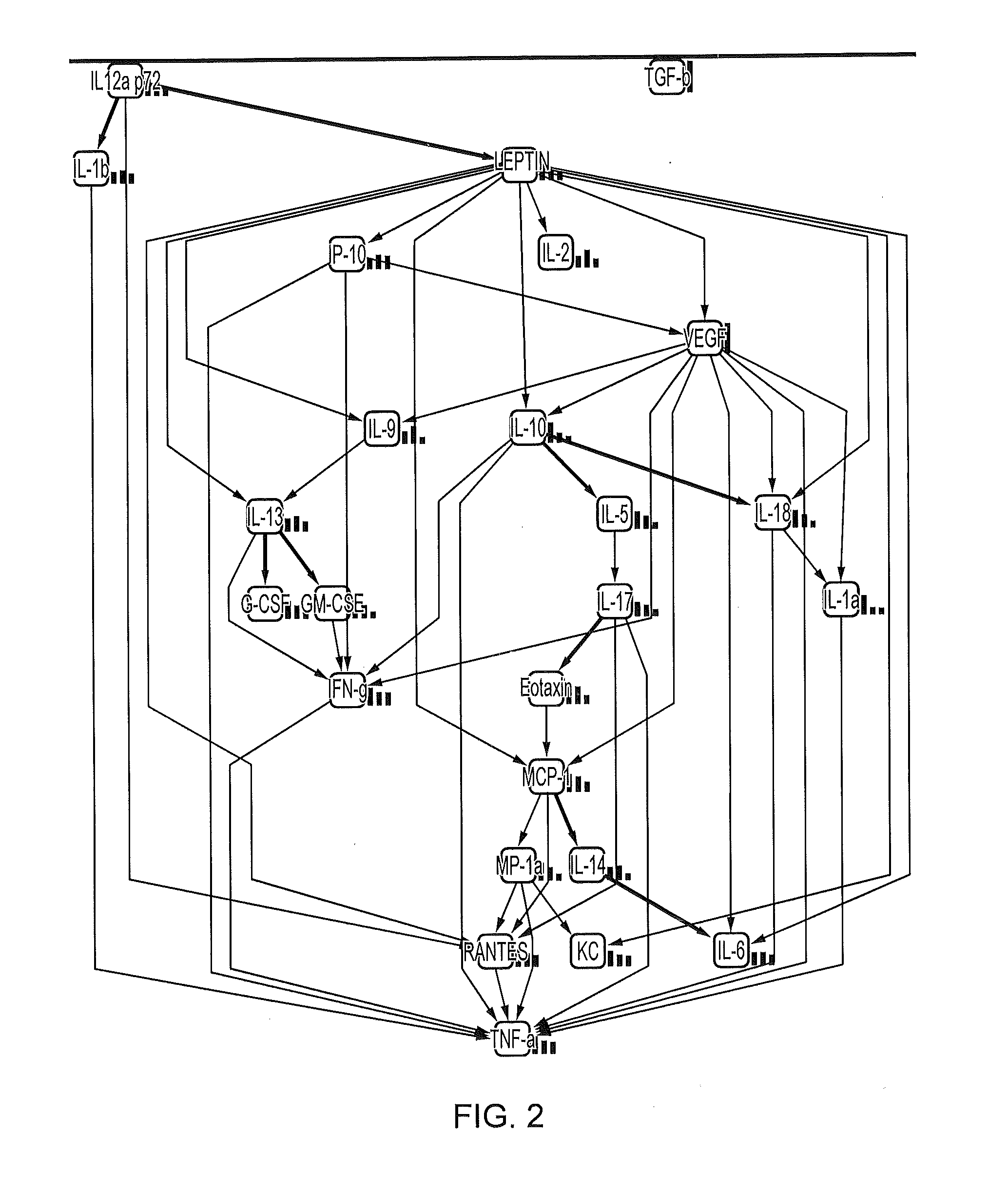Embryo implantation
a technology of embryo implantation and uterine receptivity, which is applied in the field of embryo implantation, can solve the problems of poor implantation rate of good quality embryos in human and animal alike, inadequate primed uterine environment, and reproductive failure, and achieve the effect of improving uterine receptivity and reducing the number of females
- Summary
- Abstract
- Description
- Claims
- Application Information
AI Technical Summary
Benefits of technology
Problems solved by technology
Method used
Image
Examples
example 1
[0087]Table 2 below shows a variety of cytokines analyzed and measured in mouse seminal fluid. Eotaxin and RANTES appear to be the predominant cytokines present, with levels above 500 pg / ml. IL-9, TNF-α and MIP-1a had levels above 100 pg / ml whereas several cytokines such as G-CSF and IFN-γ had levels between 50-100 pg / ml and several others such as IL-13 and TGF-β had levels below 50 pg / ml.
TABLE 2MouseMeanSEMIL-1α8.191.96IL-1β87.489.04IL-23.030.49IL-30.350.04IL-40.110.01IL-50.560.07IL-63.630.44IL-9135.1433.47IL-1019.953.36IL-12 p405.250.53IL-12 p7010.911.08IL-1320.641.86IL-175.100.90Eotaxin857.2273.85G-CSF45.033.33GM-CSF4.160.39IFN-γ46.383.95KC37.173.56MCP-130.232.65MIP-1α114.328.31MIP-1β6.681.36RANTES618.6284.17TNF-α102.279.11TGF-β27.636.54
[0088]Table 3 below shows a variety of cytokines analyzed and measured in rat seminal fluid. RANTES appears to be the predominant cytokine present. Of the cytokines analyzed only RANTES and GRO / KC had levels above 200 pg / ml. IL-10 and IL-6 had lev...
example 2
[0089]Eotaxin and RANTES appear to be the predominant cytokines each being present in an amount of more than 500 pg / ml (see Tables 1 and 2). The cytokines IL-1α, IL-6, IL-10, IL-12 (p40), IL-12 (p70), GM-CSF and MIP-1β were present at levels below 20 pg / ml and cytokines IL-1β, IL-9, 1L-13, G-CSF, TNF-α, MCP-1, KC, MIP-1a and IFN-γ were present at levels above 20 and below 150 pg / ml.
[0090]Based on these analyses, a solution of cell culture-tested recombinant mouse cytokines was made up in PBS using recombinant cytokines at the concentrations found in seminal fluid (Table 3). This was stored at −80° C. until required for imbibing the pessary.
TABLE 4Cytokine Concentrations in utero in a MousePessary Preparation once solubilised.Pessary solutionCytokineconcentration (pg / ml)IL-1α8.19IL-1β87.48IL-63.63IL-9135.14IL-1019.95IL-12 (p40)5.25IL-12 (p70)10.91IL-1320.64G-CSF45.03GM-CSF4.16TNF-α102.27MCP-130.23RANTES618.62Eotaxin857.22KC37.17MIP-1α114.32MIP-1β6.68IFN-γ46.38
[0091]Pessaries also inc...
example 3
[0092]Additional formulation components of pessaries for laboratory animals was dictated principally by toxicity (in case of accidental ingestion), palatability (to dissuade ingestion) and impact on luminal pH (the bioactivity of certain cytokines is promoted by vaginal pH). The size and shape of the pessaries is largely determined by the species for which their use is intended. For example, pessaries of approximately 4 mm in diameter are particularly suitable for mice since the size has been determined as appropriate for insertion without undue discomfort and is also of a suitable size to be retained in the vaginal vestibule. Larger laboratory animals or indeed larger breeds of mice may necessitate larger pessaries. Pessaries were made from laser-etched nylon at a setting of between 5-10 Watts, use of this technique makes it possible to manipulate porosity (which facilitates ‘loading’) and overall shape and dimensions. It is envisaged that pessaries will be provided in a range of s...
PUM
| Property | Measurement | Unit |
|---|---|---|
| length | aaaaa | aaaaa |
| diameter | aaaaa | aaaaa |
| composition | aaaaa | aaaaa |
Abstract
Description
Claims
Application Information
 Login to View More
Login to View More - R&D
- Intellectual Property
- Life Sciences
- Materials
- Tech Scout
- Unparalleled Data Quality
- Higher Quality Content
- 60% Fewer Hallucinations
Browse by: Latest US Patents, China's latest patents, Technical Efficacy Thesaurus, Application Domain, Technology Topic, Popular Technical Reports.
© 2025 PatSnap. All rights reserved.Legal|Privacy policy|Modern Slavery Act Transparency Statement|Sitemap|About US| Contact US: help@patsnap.com



